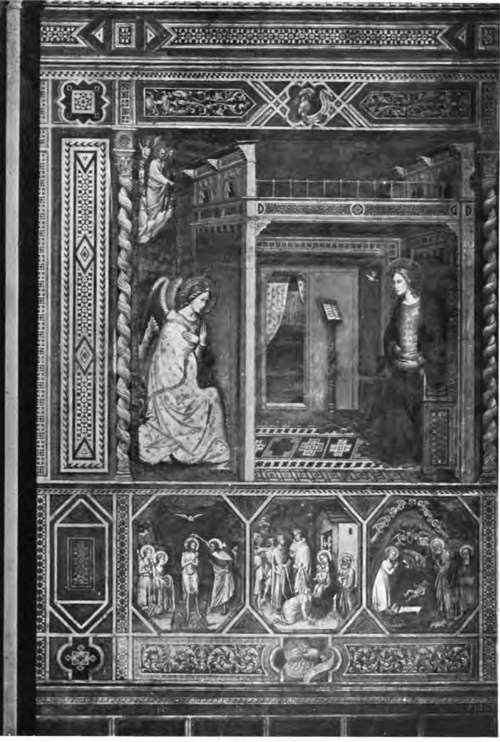Historical Sketch. Part 8
Description
This section is from the book "Mural Painting", by F. Hamilton Jackson. Also available from Amazon: Mural Painting: -1904.
Historical Sketch. Part 8
This rapid sketch concerns itself with wall-painting only. Many of the names included are those of painters who also painted many easel or panel pictures, but with these we are not now concerned, and I have not considered the great oil pictures which one sees in Venice affixed to wall or ceiling, though these were often painted for their place, because, notwithstanding their frequent individual beauty, they do not in general decorate the wall-surface, being either too dark or too shiny, and, as is shown by those which have been removed to picture-galleries, looking quite as well among accidental surroundings. Still, it is with a certain remorse that one leaves out such pictures as Carpaccio's series in S. Giorgio degli Schiavoni, Venice, and the Ursula series in the Academy, while the ceilings of the ducal palace and a few of the wall canvases are equally deserving of admiration, though they were not wall-paintings in the sense in which the word is used in this book.

Wall-painting of the fourteenth century in S. Maria Sovella Florence.
To face page 34.
The power of representing natural facts increased with extraordinary rapidity together with the facility with which materials were handled, and the aim of representing nature contended with traditional treatment and vanquished it. Giotto died in 1337. The roof of the Sistine chapel was painted by Michel Angelo between 1508 and 1512, and Raffaelle died in 1520, by which time the decadence had set in. In this two hundred years the art of fresco painting burgeoned, culminated, and began to decay. The level of attainment was, however, most varied in different parts of the country, and when one remembers that Fiorenzo di Lorenzo of Perugia died in the same year as Raffaelle, who was also trained in Perugia, and that Masaccio and Gentile da Fabriano were living at the same time, it seems impossible to devise any general arrangement which shall show continuous progression and elucidate the divergences and attractions of the different schools between and for each other.
Continue to:
